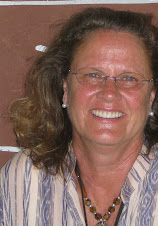If you could put your community radio station anywhere in India, where would you locate it? Easy... Konark.
Easy... Konark. 
The sound studio is insulated with indigenous materials - local egg cartons in fact - but the station is powered with an impressive array of equipment for editing and broadcasting; young volunteers serve as jo urnalists and technicians.
urnalists and technicians.
Mr. Ansari shares my enthusiasm for capturing oral traditions - in fact is way ahead of me - and played two recordings he has made of a traditional lullaby and an itinerant fiddle player, both hauntingly lovely. He feels a strong connection to the songs and stories that he grew up with and sees the way they affect the way he thinks and behaves today. He knows that they are disappearing and is enthusiastic about receiving our recordings and both broadcasting and narrowcasting them.
 Easy... Konark.
Easy... Konark. 
Site of the UNESCO World Heritage Sun Temple, Konark lies 40 km north of Puri and just inland from Odisha's coastline. It's easy to find Radio Namaskar's tower and the hospitality of Mr. N.A. Shah Ansari, the director of the station and founder of Young India, which he started when he was only in Class X. Mr. Ansari founded the station to gi ve voice to remote villages and it is the only station in Odisha performing that vital service today.
ve voice to remote villages and it is the only station in Odisha performing that vital service today.
 ve voice to remote villages and it is the only station in Odisha performing that vital service today.
ve voice to remote villages and it is the only station in Odisha performing that vital service today. The sound studio is insulated with indigenous materials - local egg cartons in fact - but the station is powered with an impressive array of equipment for editing and broadcasting; young volunteers serve as jo
 urnalists and technicians.
urnalists and technicians.Mr. Ansari shares my enthusiasm for capturing oral traditions - in fact is way ahead of me - and played two recordings he has made of a traditional lullaby and an itinerant fiddle player, both hauntingly lovely. He feels a strong connection to the songs and stories that he grew up with and sees the way they affect the way he thinks and behaves today. He knows that they are disappearing and is enthusiastic about receiving our recordings and both broadcasting and narrowcasting them.
In India community radio stations are licensed to broadcast 20 kms although programs may be heard from somewhat farther away under some conditions. That's not far in a big state like Odisha, but narrowcasting can be used to reach more audiences. Just as I like to download American public radio programs to my iPod and listen to them on my walk to work, Mr. Ansari can make sound recordings available for villages to play over their loudspeaker systems. Whereas broadcasting is "one to many", narrowcasting is "one to one" or "one to few".
This visit was truly exciting. I left the station feeling part of a dynamic movement and look forward to collaborating with this dedicated group of change agents.
To contact Radio Namaskar email them at radionamaskar@gmail.com or youngindia@hotmail.com, or visit them on the web at www.radionamaskar.org.



